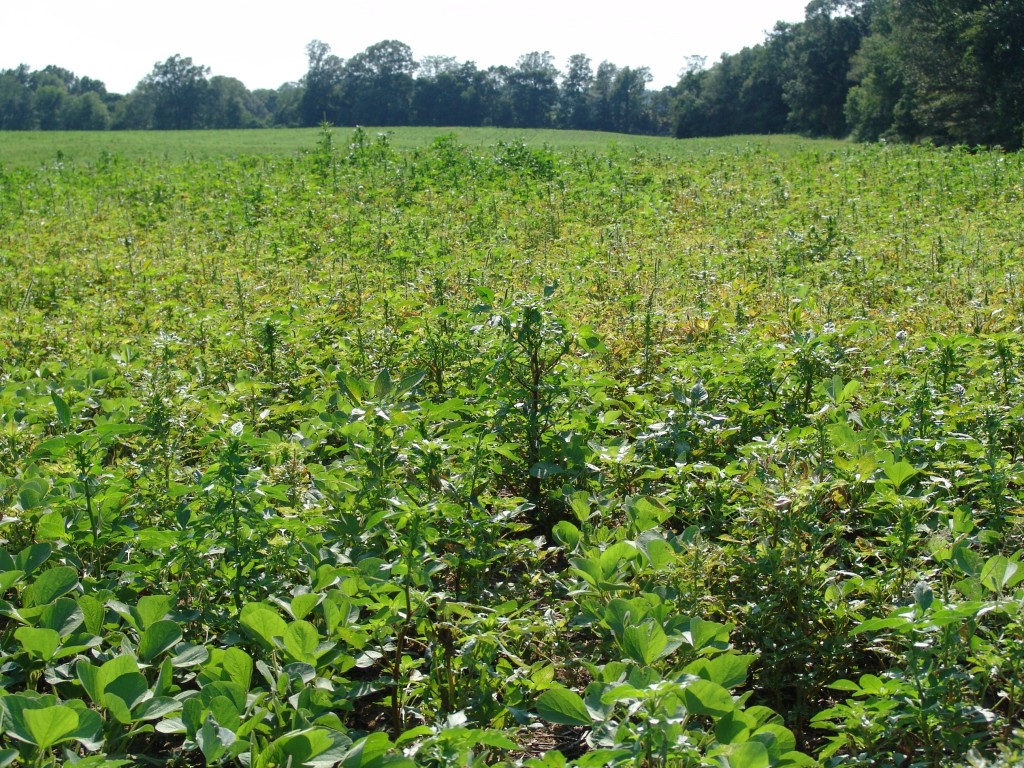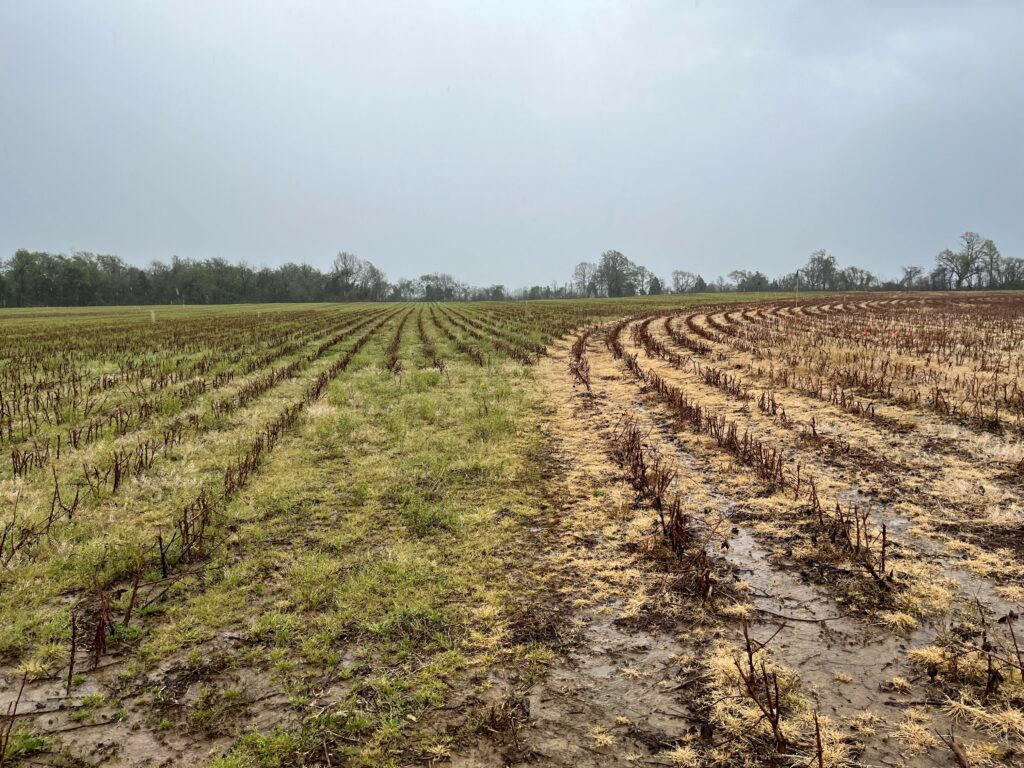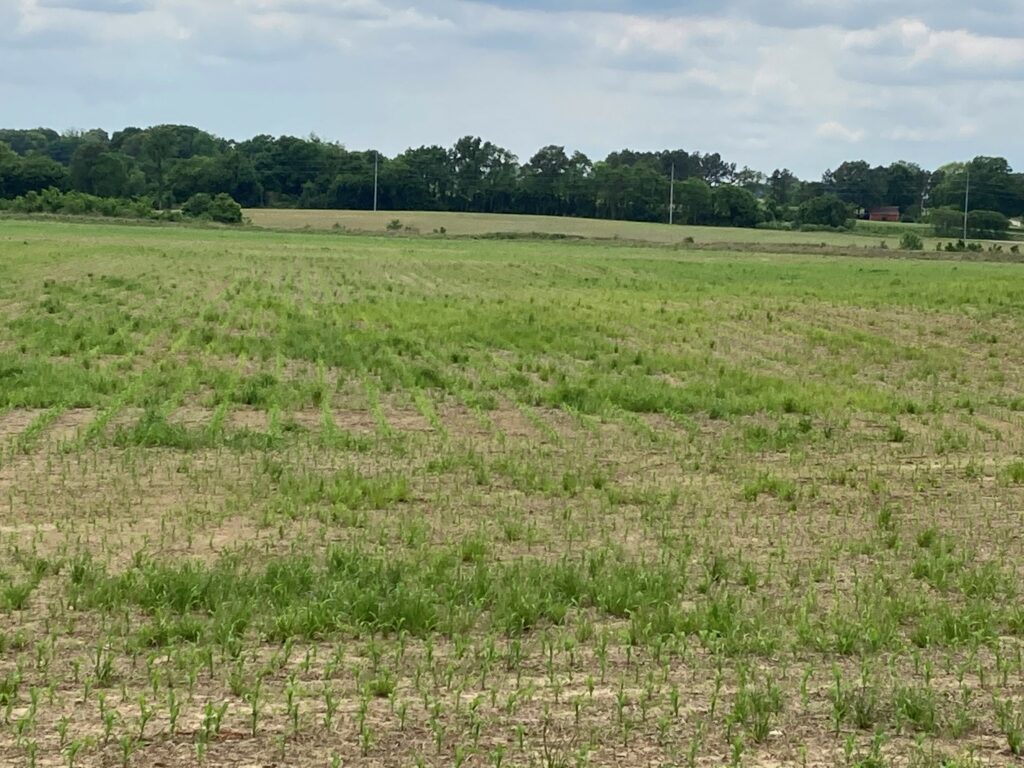Zidua (pyroxasulfone) applied via impregnated fertilizer in cotton has become popular in Tennessee. My understanding is that about 25% of the cotton acres last year had Zidua applied in this fashion. With the increasingly poor Palmer amaranth and grass control we are experiencing with dicamba + glyphosate, overlaying residual herbicides must be the foundation for weed control. Continue reading
All posts by Larry Steckel, Extension Weed Specialist
Best Management Practices for Liberty Applications
Palmer amaranth emergence is very rapid now. This is about a month early for Palmer emergence to be at this pace in Tennessee. With the spread of dicamba resistance in our Palmer amaranth population Liberty is our last best hope to control dicamba-resistant pigweed escapes in cotton and soybean. This is just a quick reminder that the time of day that Liberty is applied has a large determination on the success or failure of that application. Continue reading
Think Twice Before Cutting PRE-Applied Herbicides

It is apparent from numerous calls that many growers this spring are planning to cut rates on PRE-applied herbicides in soybean and cotton. I can understand the mindset with the depressed commodity prices, however I fear it may be the catalyst for Palmer amaranth history to repeat itself. Continue reading
Glyphosate-Resistant Johnsongrass Management

Large patches of Johnsongrass that have gotten through glyphosate burndown are now very prevalent in many fields. This is particularly noticeable in several southeastern counties of West Tennessee where some of the Johnsongrass has shaken off burndown and now is almost waist high in some cases. The main threat with Johnsongrass is in corn where there are few POST applied options. Continue reading
Ryegrass Weed Control in April

A good many reports from the field reflect what our research this spring has shown. In short, clethodim is the herbicide of choice to control ryegrass. Often clethodim tankmixed with glyphosate can improve the probability of better overall control. Ryegrass control with glyphosate alone is much more hit and miss both in our research and in many fields this year (Picture 1). Continue reading
Going Back to “Old School” Burndown

Last spring a good many folks went back “old school” and applied glyphosate alone for burndown and saw very good results. This includes applications made when nighttime temperatures were below freezing (Picture 1).
Continue reading
Cover Crop Burndown

It is cover crop burndown time. There is no one size fits all recommendation for cover crop control. It really depends on the environment and the cover crop species in the field. With rain predicted over the next few days, one should be mindful that cover crop burndown can be tricky during periods of saturated soil conditions. This is particularly true with systemic herbicides where translocation of those herbicides to growing points can become limited. Continue reading
Ryegrass Burndown

Ryegrass was a major issue last spring. For managing GR ryegrass, it is best to do it as early as practical and utilize a clethodim + glyphosate tankmix. This tankmix needs to be applied at least 30 days ahead of corn planting to use a clethodim rate that has any chance of controlling well established ryegrass. Continue reading
